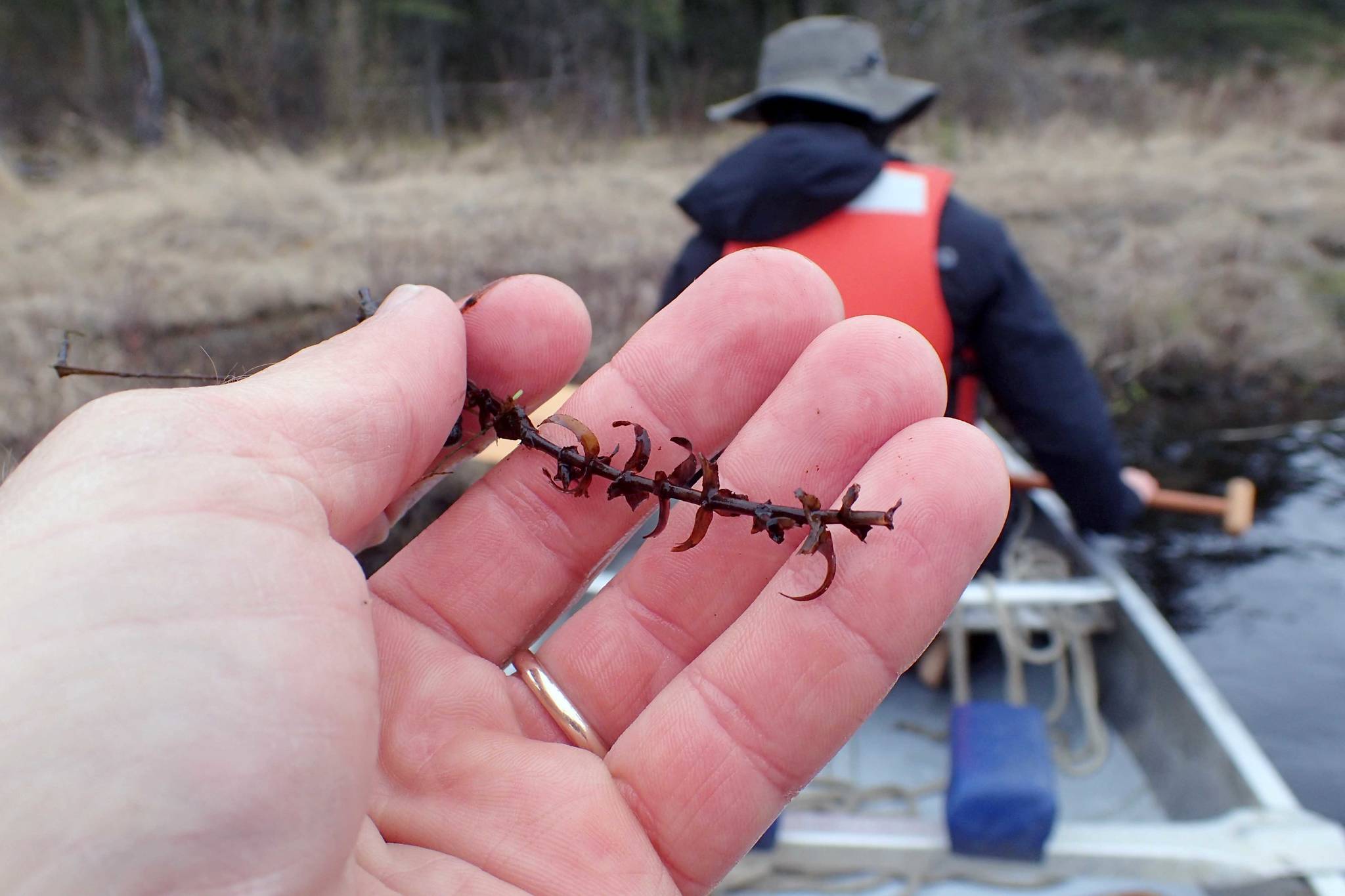With ponds and lakes becoming ice free, educating Alaskans about our first aquatic invasive plant, elodea, is paramount. This household aquarium plant easily spreads and just a single fragment can start an infestation that chokes out a water body and prevents access by boats and airplanes. We have witnessed this first-hand, and the results were alarming.
My wife and I are like many retirees who escape to their cabins for the summer. In our case, it is a remote fly-out cabin northwest of Anchorage in the Susitna Valley, Sucker Lake. Our family has been on Sucker Lake since the late 1940s and over the years we have witnessed many changes to the lake system. One of the most significant was the introduction of invasive northern pike and how rapidly they ate all the native salmon and grayling.
Now Sucker Lake is faced with another invasive species, elodea. We discovered a small patch in the lake in the summer of 2016. Over the next four summers, we watched elodea grow to where it covered about 80% of the lake surface. The elodea mat became so thick that in the fall of 2018, I watched two beavers trying to drag birch limbs they had cut to their winter feed pile. The limbs would get hung-up in the mat and were eventually left behind. In the summer of 2019, both beaver houses on the lake were abandoned. Because of the thickness of the mat, Northern Pike began laying on top of the elodea just below the surface of the water, which made them easy prey for the eagles circling above. The diver ducks were also easy prey for the eagles since they couldn’t get below the elodea mat. The eagles had a banner year! By the middle of summer 2019, the elodea was so thick that rowing a boat or paddling a canoe was almost impossible. In nearby Alexander Lake, also heavily infested with elodea, the returning salmon were having a hard time navigating through the lake to their spawning grounds
In the fall of 2018, a site visit was conducted to Sucker and Alexander lakes by several different state and federal agencies along with several private groups. Subsequently, a task force was formed of approximately 30 members working together to achieve eradication, secure funding for eradication, identify infested lakes, and educate the public. In the late summer of 2019, the first treatment of herbicide occurred at Sucker Lake. This treatment knocked elodea to the bottom of the lake but did not kill the roots. The first application of an herbicide to remove elodea from the lake is planned for the summer of 2020, and will be a multi-year project.
Elodea is not specific to just the Mat/Su Valley. Infestations have been found on the Kenai Peninsula, on waters around Cordova, and in the Fairbanks area. Several lakes in the Anchorage area have had infestations that were treated. We also understand a small infestation was found late last fall in Big Lake.
Key to eradication is early detection and treatment. It is imperative that the public go online and educate themselves about elodea (http://plants.alaska.gov/invasives/elodea.htm). Learn how to ID, and be vigilant for presence when on lakes and waterways. Check your boat and trailer for elodea, water rudders on your floats, ice auger, and bottoms of your waders. If you find elodea, mark its location on a map, or with a GPS if possible, take good pictures of the plant, and report to Alaska DNR Division of Agriculture or through ADF&G’s invasive species reporter. 1-877-INVASIV (468-2748).
Eradication of elodea requires action. We urge you to call your congressional delegation, state representatives and assembly members to request funding for fighting this aggressive invasive aquatic plant. To ignore these infestations will surely have devastating impacts economically and recreationally to the state of Alaska’s residents.
Walter and Carol Nesbett have been married for 45 years. They were married in Anchorage where they enjoyed their careers and raised two children. In retirement they are fulling their dream of living their summers at their remote cabin on Suckerlake.
• By Walt and Carol Nesbett

